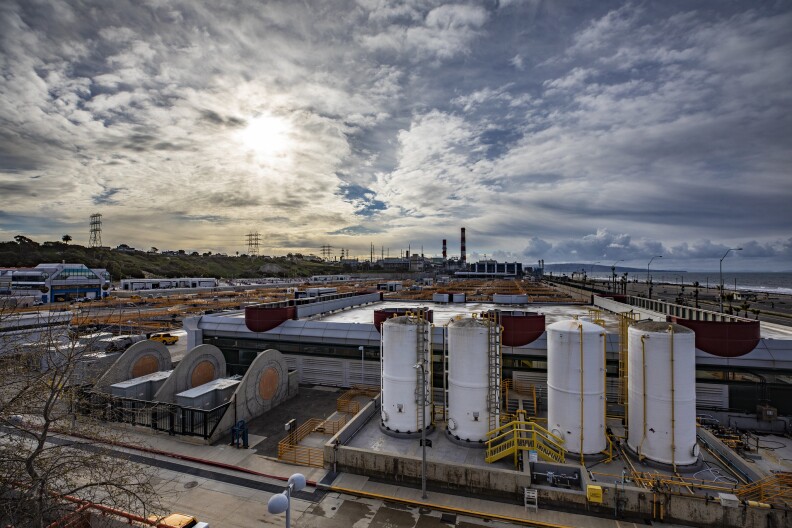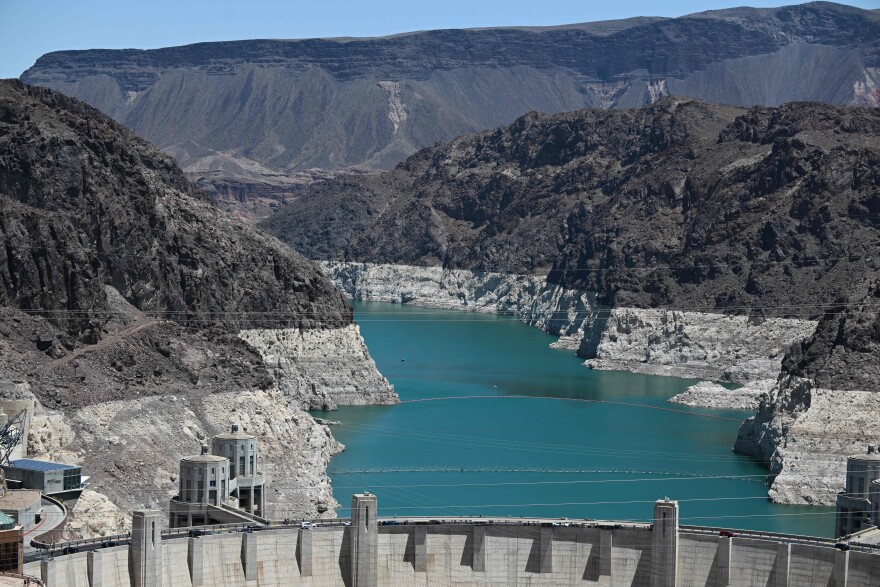The Colorado River is the backbone of the West’s water supply. The river provides water to hundreds of thousands of acres of farmland and 40 million people in seven U.S. states (California, Colorado, Wyoming, Utah, New Mexico, Arizona and Nevada) and northern Mexico. But overuse, a 23-year “megadrought” and aridification fueled by the climate crisis has left the river stretched far too thin.
The situation is reaching unprecedented crisis levels. Last summer, the federal government declared a water shortage for the first time and slashed water deliveries to Arizona and Nevada. But that hasn’t been enough–Lake Mead and Lake Powell, the river’s largest reservoirs, are at historically low levels.
Due to a complicated set of legal agreements (that many water managers and experts say aren’t keeping up with the pace of the climate crisis), California has yet to face further cuts to its share of the river. Arizona and Nevada, however, will see their shares slashed again next year.
California’s Share
California gets more water from the river than any state. And most of that goes to farms and cities here in southern California. The largest bucket goes to farmland in the arid Imperial Valley.
-
It's gonna be Yankees v the Boys in Blue
-
Nonprofit's launching fundraiser to keep it afloat
-
USC study documents what residents want from trees
The second-largest bucket goes to the Metropolitan Water District of Southern California, or MWD, which provides water to millions of people in Los Angeles and cities across the Southland. The Colorado provides about a third of all the water we use here.
For nearly a century, the river has been the backbone of MWD’s water supply, but the climate crisis is making it clear that our traditional, imported water supplies can’t be the way of the future.
Water Purification's Role

“Water purification will become a backbone of water systems,” said MWD assistant general manager Deven Upadhyay.
Water purification is a more palatable way to describe the process of purifying and reusing wastewater, or all the water that goes down our drains and yes…toilets, too.
Currently, most wastewater is treated to a certain level before being dumped in the ocean. Water purification involves several additional steps to get the water to drinkable quality. (More on that here).
MWD has partnered with the L.A. County Sanitation District, to build what would be the nation’s largest wastewater recycling facility.
By 2032, Upadhyay says they’ll recycle enough water to replace as much as 15% of the agency’s imported water supply, though he said recycled water deliveries to some cities could start as soon as 2027. Currently, recycled water offsets about 9% of California’s water needs. This project alone would triple that number, Upadhyay said.
“It is truly a structure that will help the Southwest in terms of water management,” said Upadhyay. “What we see is a path for this program to benefit the Southern California region, but in turn, through our link to these partners on the Colorado River, benefit the river as a whole.”
Though contracts still need to be signed, Arizona and Nevada have agreed to help fund the multi-billion-dollar project in exchange for a slice of California’s sizable Colorado River share.
“This project is a great example of the collaboration that's possible in California and more broadly to address our water challenges,” said Heather Cooley, research director for non-profit, nonpartisan water research group Pacific Institute.
Funding for water recycling is growing. On Thursday, U.S. Interior Secretary Deb Haaland visited Irvine to announce funding from the federal infrastructure bill.
The bill allocates more than $310 million dollars to water infrastructure projects across the West, with $267 million going to California. Haaland announced funding for 25 water recycling projects (20 of them are in the state).
Haaland made the announcement from a wastewater recycling facility in Irvine, which will get $12 million to bolster its storage capacity. Riverside County's largest wastewater recycling facility will get $10 million, and more than $25 million will go to water recycling projects in L.A. County.

Waste Into Resource
Nearly 75% of treated wastewater in California is currently dumped in the ocean. L.A. alone dumps nearly 230 million gallons of it per day in the Santa Monica Bay. According to the Pacific Institute, California could more than triple its use of recycled water, lowering its reliance on imported water from both northern California and the Colorado River.
“There are water quality benefits as well if we're not discharging as much wastewater into our oceans, for example,” Cooley said. “We've identified significant opportunities to develop these local supplies and reduce our reliance on these increasingly vulnerable imported sources of water.”
Those opportunities, according to the Pacific Institute, include continuing to improve urban water use efficiency and conservation (that could reduce use as much as 48%), recycling more wastewater (California alone could create as much as 910 billion gallons per year) and capturing more stormwater (could get us 970 billion gallons of water in a wet year).
From Santa Monica, to Long Beach, to Fountain Valley to L.A. and beyond, cities across the Southland are heavily investing in local water supplies, particularly through water recycling, to lessen their reliance on the Colorado River and northern California supplies.
But Cooley emphasized the need for more long-term and collaborative planning, especially given the money and time it takes to get these projects online.
“There’s a need to really do better integrated planning so that when we build a recycled water facility, we're doing it based on realistic projections of how much water demand is going to be and how much wastewater we're generating,” she said. “That will ensure that we are right-sizing our recycled water investments.”
Amid the rhetoric of “water wars” in Colorado River discussions, Cooley said the MWD recycled water project is one example of getting out of silos and thinking more creatively and collaboratively about water management across the basin.
“I think it's the type of project we need to be pursuing more of,” she said, “given the challenges we face.”










